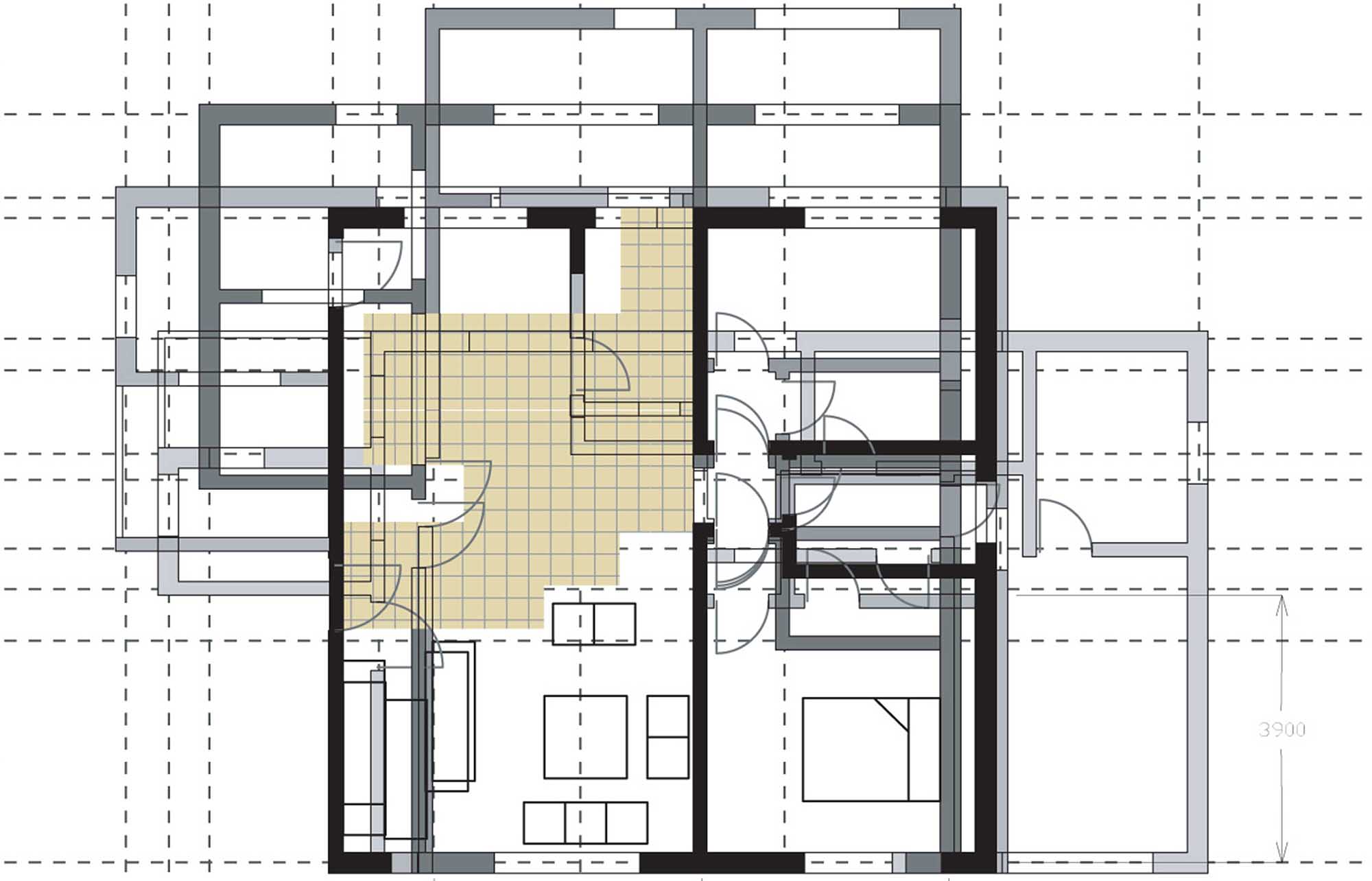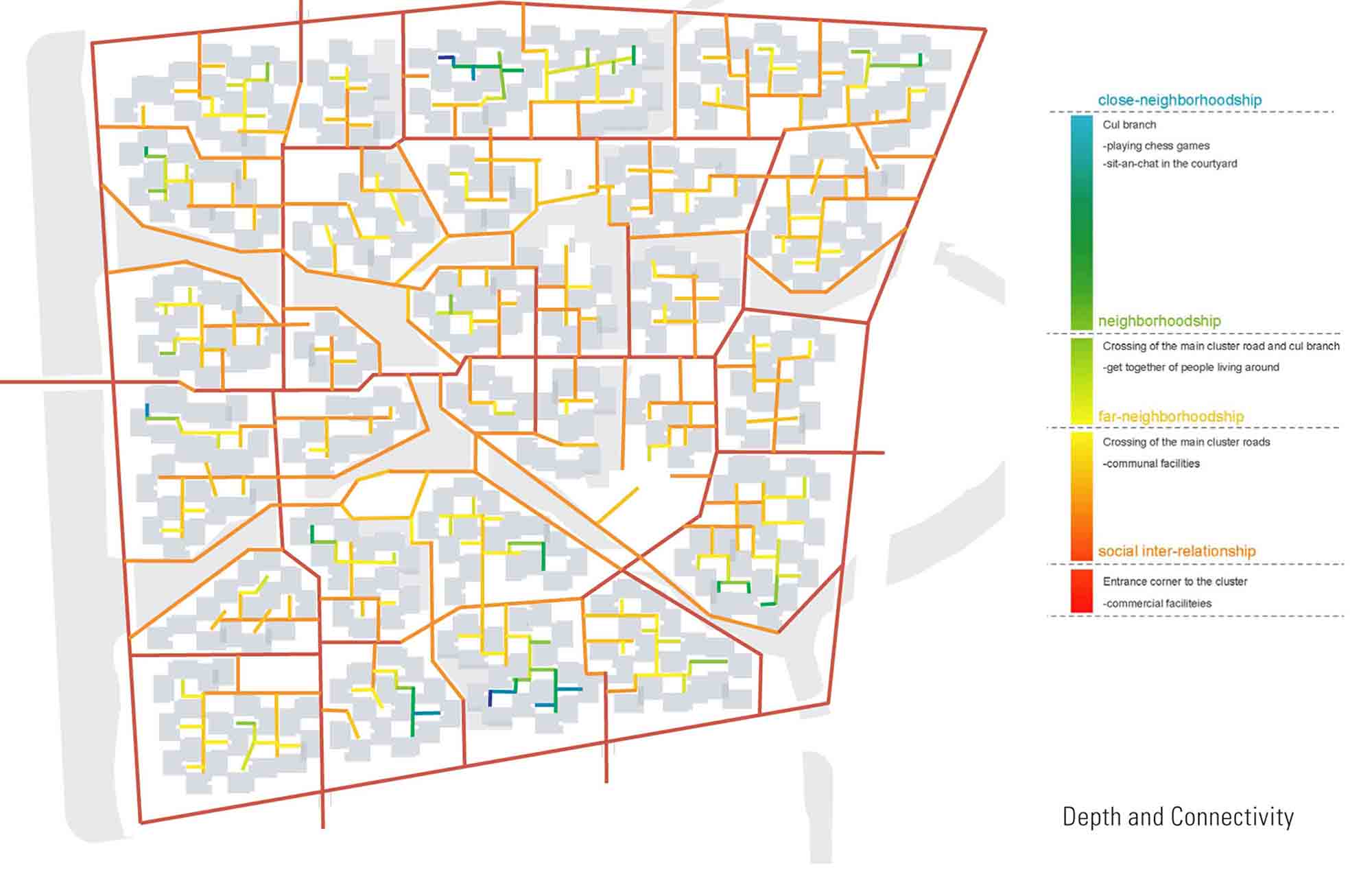Projective Research Project at
the Berlage Institute
Associative Design
Associative design is a parametric design technique using metric parameters to create an infinite number of variations. It is a technique based on associative geometry. Such geometries describe the relationship between various assemblies and constitute a design object as a mutually linked geometrical construction. The aim of this design research program is to apply these new computational techniques to our living environments, which form most of our city life, urban policies, desires, attention and its growth.
In 2004, the city of Zhu Jia Jiao organised an open architectural competition for the city’s extension. The competition’s demand was to develop an architectural solution to accommodate the population growth of mid-size Chinese cities, while respecting the Zhu Jia Jiao’s cultural and architectural heritage.
For the first time in history, China is faced with the consequences of economic expansion and population growth. In particular, the country is faced with how to develop a housing environment that does not only fulfil the housing demands, but also develops a living environment that is of the same quality as traditional Chinese vernaculars.
By taking a neighbourhood model as an unfolding of specific social, economic, political, climatic, and material environments, we argue that new forms of housing neighbourhoods may learn from Chinese historical heritage and site specificity to present a serious alternative to the contemporary housing production. This design approach is the construction of a synthetic vernacular.
The goal of the research project is to design a synthetic vernacular. In order to a achieve that each research project unfolds the same design process, the construction of an associative protocol, based on the logic of the historical models, which is driven by various environmental forces that shape today’s Chinese urbanization.
Associative Protocol for New Housing Neighbourhood
An associative protocol describes the geometrical relationship between the smallest part of the design, the housing unit, and the biggest part of it, namely the construction of a new neighbourhood. The various constraints are translated into metrical and non-metrical geometrical model.The outcome of this research phase is the design of neighbourhood model transformed and developed by specific manufacturing processes, housing policy, social strata, building economy and ecological environment. In the case of our research on a synthetic vernacular we have development mainly 3 different scales.
The first scale of the associative protocol is the housing unit. Each research team develop an housing unit that can fit either the economical or social demand of Chinese population and is designed not a type of a flat or house but as a family or a population of housing units that differentiate in terms of income, luxury, size, owners demands or organizations depending on the family structure.
The second scale defines the cluster of the housing unit. Within this scale each projects is tested on the emerging effects of the outside spaces. Depending of the configuration of the geometrical potential of each project, courtyards, or better degrees of intimacies are formed by the way these housing units are agglomerate by each other.
The third scale of the associative protocol is the housing neighbourhood itself. Each research team analysed the site, in our case the location of the competition, by the various regimes that governs Chinese master planning. In our case these have been the economical, environmental, administrative and archaeological forces. Each team evolved with the understanding of the site as a field of varying potentials and applied their housing unit according to them. The unfold of these application by associative geometry was an urban fabric consisting of individually different formed housing units, that together create a new urban morphology based on the repetition of each unit. Each of these urban models is associative in the sense that if one of the housing units transforms it will have an effect on the whole neighbourhood.
Conclusion: Syntactic Vernacular - Growth Model
In opposition to conventional planning, each of these research projects can be understood as a top-bottom approach. This means that each project is constructed by very precise and specific rules on demands and constraints. If it is applied in practice it allows for emerged effects, since all models are growth based and secondly, even more important, generate high degree of connective urban fabrics. These fabrics have been historical recognised as organisations that can incorporate changes and behave, not by the will of an ideological master, but as a lively structure.








